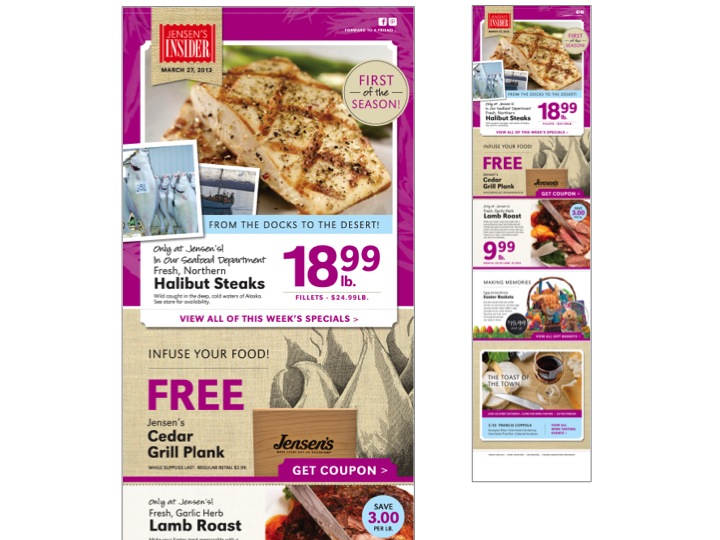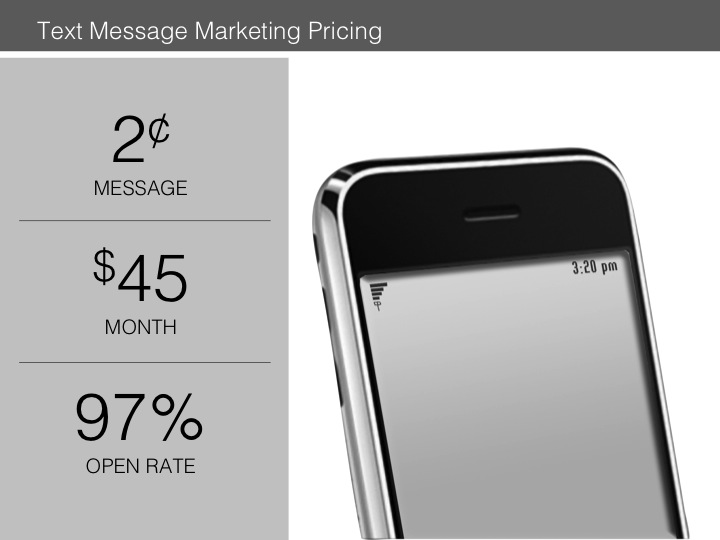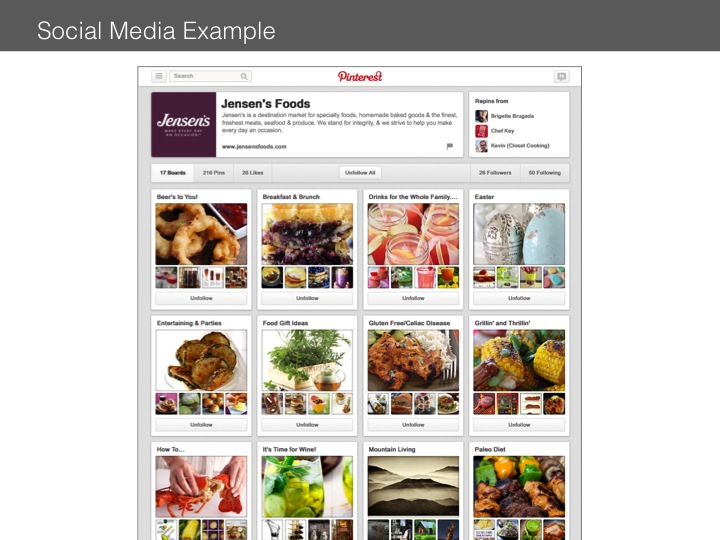Company Blog
Life’s a Sandwich
by Adam Zack — August 20, 2015

“Ugh, I ate too much.”
The Hardest Words
by Adam Zack — August 12, 2015
 A while back I recounted something my Uncle Butch (yes, that’s his real name) told me about waterskiing. “If you’re not falling, you’re not trying.” It really is applicable to most anything in life worth doing, If you’re not failing at times, or making mistakes, you’re not trying hard enough. Even someone named Perfecto (supposedly he makes the best Paella in Los Angeles) makes mistakes. Excellent managers realize that their team is going to make errors, miss targets, under or over estimate and fail sometimes. It is the effort that counts – when it’s well thought out, planned and executed with the best intentions. The upside of making a mistake is the learning portion that comes with it, and the result of the next effort being better than the previous one. But this is not about making mistakes and doing better the next time. It’s about what to do when you do make a mistake. Human nature is to hope no one notices. The Blame Game is very popular, as is the Denial Shuffle and the It Doesn’t Really Matter Two Step. So when we make a mistake, the hardest part often is owning up to it, and the hardest words are I’m Sorry. And not the eye-rolling, “Sorrrr-ryyyy” like you used to give your mom. Or the half dismissive “Uh, yeah, sorry” that you mumble out. No, real learnin...read more
A while back I recounted something my Uncle Butch (yes, that’s his real name) told me about waterskiing. “If you’re not falling, you’re not trying.” It really is applicable to most anything in life worth doing, If you’re not failing at times, or making mistakes, you’re not trying hard enough. Even someone named Perfecto (supposedly he makes the best Paella in Los Angeles) makes mistakes. Excellent managers realize that their team is going to make errors, miss targets, under or over estimate and fail sometimes. It is the effort that counts – when it’s well thought out, planned and executed with the best intentions. The upside of making a mistake is the learning portion that comes with it, and the result of the next effort being better than the previous one. But this is not about making mistakes and doing better the next time. It’s about what to do when you do make a mistake. Human nature is to hope no one notices. The Blame Game is very popular, as is the Denial Shuffle and the It Doesn’t Really Matter Two Step. So when we make a mistake, the hardest part often is owning up to it, and the hardest words are I’m Sorry. And not the eye-rolling, “Sorrrr-ryyyy” like you used to give your mom. Or the half dismissive “Uh, yeah, sorry” that you mumble out. No, real learnin...read moreLead Me, Lead Me
by Adam Zack — August 6, 2015
 Are great leaders made or born? And what are the traits of a truly great leader? I define a great leader like this: A great leader could call their team at the middle of the night, tell them that there is a plumbing problem and all the toilets and sinks are backing up in the store, and their help is really needed. Then, not because they fear for their jobs, not because they are worried about lack of sleep or getting their hands dirty, but because the leader needs their help and wouldn’t have called if he didn’t, they head right over to the store. And the leader is there, plunger in hand, directing the team and helping at the same time.
Are great leaders made or born? And what are the traits of a truly great leader? I define a great leader like this: A great leader could call their team at the middle of the night, tell them that there is a plumbing problem and all the toilets and sinks are backing up in the store, and their help is really needed. Then, not because they fear for their jobs, not because they are worried about lack of sleep or getting their hands dirty, but because the leader needs their help and wouldn’t have called if he didn’t, they head right over to the store. And the leader is there, plunger in hand, directing the team and helping at the same time.LEADER (noun)
- a person or thing that leads.
- a guiding or directing head, as of an army, movement, or political group.
Howdy Partner
by Adam Zack — July 31, 2015
Over the past 25 years I have seen many, many grocery store employees treat salesmen, delivery drivers, merchandisers, repairmen and other vendors like $@#*. I think it’s some kind of junior power trip, where they know they have some leverage because, after all “I’m the customer! I’m paying this guy’s salary by letting him (or her) sell to me!” It’s like they are in Bizzaro World and do the exact opposite of how they are taught to treat their customers. And you know what happens after the vendor does his job and leaves the store? He runs into other vendors, and employees in other stores, and his family and friends and says something along the lines of “You’re not going to believe what an @*&^%$#@ the guy at XYZ Market is! If I didn’t have to deliver to them, I’d never go in there!” And the word gets around. So where do these employees get this behavior? Were they beaten like redheaded step-children as kids? Were they bullied in their youth and are now getting their revenge? Or are they just following the example of person who trained them and other employees they have observed? Whatever the reason, it is management’s responsibility to create a culture of respect and courtesy with their store. It obviously starts with the customer who comes through the front door, but it has to continue to the plumber’s helper who is just there to pump the grease trap. (And if there ever was a job that deserved a little respect and sympathy, ...read moreHumor Sells
by Adam Zack — July 23, 2015
A priest, a minister and a rabbi want to see who’s best at his job. So they go into the woods, and they find a bear, and they try to convert it to their particular religion. Later, they get together, and the priest says, “Well, when I found the bear, I read to him from the Catechism and sprinkled him with holy water”. And the minister says, “Well, I found a bear by the stream. I preached God’s holy word to him. The bear was so mesmerized that he let me baptize him”. They both looked down at the rabbi, who’s laying on a gurney in a body cast and they said, “What happened?” And the rabbi said, “Well, I never should have started with the circumcision”. It’s funny, right? Humor in our daily lives has the unique and encompassing ability to ease tensions, to lighten a situation, to make us relax. Laughter, or even just a natural smile is a proven stress reliever. But how is it relative to our business as grocers and marketers? Is it even something you should consider when marketing or creating an ad? Absolutely. Check out this store sign: That makes you smile AND it makes you want to buy chips. Probably two bags, since most of you considerate people would want to get one that your spouse likes too. Ad themes are a great way to communicate your creativity and reinforce your differenti...read more
That makes you smile AND it makes you want to buy chips. Probably two bags, since most of you considerate people would want to get one that your spouse likes too. Ad themes are a great way to communicate your creativity and reinforce your differenti...read moreCrunch Time
by Adam Zack — July 9, 2015
 You know those supermarket ads you get in the mail or newspaper each week? The one that come via Red Plum or Advo or some other mass distribution vehicle? Next time you get them, try this experiment. Lay a few of them out on the counter and cover up the name of the store they are from. Can you tell which store they are from without seeing the name? Or do they all pretty much look the same? The big chain stores are very, very good at producing ads that offer no differentiation from the other big chains. They even have the same items, or at least the same type of items. They offer no unique promotions. They don’t tout uncommon offerings. They don’t do anything to let the reader know that there is an exclusive experience, if only the shopper were to come in to see it. An ad is your chance to capture attention and bring the shopper in. Not enough retailers think beyond the proverbial box when it comes to promoting their experience. And no, major holiday’s do not count. Anything your chain competitors do doesn’t count either. So this week here are five promotional ad themes that you can do to differentiate yourself. They are creative. They are fun. They are relatable and easily promotable in...read more
You know those supermarket ads you get in the mail or newspaper each week? The one that come via Red Plum or Advo or some other mass distribution vehicle? Next time you get them, try this experiment. Lay a few of them out on the counter and cover up the name of the store they are from. Can you tell which store they are from without seeing the name? Or do they all pretty much look the same? The big chain stores are very, very good at producing ads that offer no differentiation from the other big chains. They even have the same items, or at least the same type of items. They offer no unique promotions. They don’t tout uncommon offerings. They don’t do anything to let the reader know that there is an exclusive experience, if only the shopper were to come in to see it. An ad is your chance to capture attention and bring the shopper in. Not enough retailers think beyond the proverbial box when it comes to promoting their experience. And no, major holiday’s do not count. Anything your chain competitors do doesn’t count either. So this week here are five promotional ad themes that you can do to differentiate yourself. They are creative. They are fun. They are relatable and easily promotable in...read moreThe Art of Thought
by Adam Zack — July 1, 2015
 Is being thoughtful a natural gift, or a determined choice of action? The most wonderful people I know are the most thoughtful. They are the ones that listen to the things unsaid. They pay attention when most people don’t. They store little bits of information in their brain of things that are important to others and remember them at just the right times. They give gifts that you really want and appreciate. They do things for no reason at all, like make you a copy of a CD (yes, a lot of us still do listen to CDs) and say something like “I know you like The Smiths, so I made you a mix CD of their best songs.” Thoughtfulness is the by-product of people who really, truly care. They do it because it makes them feel good to make you feel good. Just like thoughtful people, some of the most successful businesses are the most thoughtful. That doesn’t mean that they sacrifice profit just to be nice. In fact, it’s just the opposite. They are able to achieve consistent, rewarding profit margins because they are thoughtful to their customers, their vendors and their employees. I had the pleasure of running a market over the last 4 years that did incredible sales volume. We served over 15,000 customers a week out of a 12,000 foot store. So when the holidays rolled aroun...read more
Is being thoughtful a natural gift, or a determined choice of action? The most wonderful people I know are the most thoughtful. They are the ones that listen to the things unsaid. They pay attention when most people don’t. They store little bits of information in their brain of things that are important to others and remember them at just the right times. They give gifts that you really want and appreciate. They do things for no reason at all, like make you a copy of a CD (yes, a lot of us still do listen to CDs) and say something like “I know you like The Smiths, so I made you a mix CD of their best songs.” Thoughtfulness is the by-product of people who really, truly care. They do it because it makes them feel good to make you feel good. Just like thoughtful people, some of the most successful businesses are the most thoughtful. That doesn’t mean that they sacrifice profit just to be nice. In fact, it’s just the opposite. They are able to achieve consistent, rewarding profit margins because they are thoughtful to their customers, their vendors and their employees. I had the pleasure of running a market over the last 4 years that did incredible sales volume. We served over 15,000 customers a week out of a 12,000 foot store. So when the holidays rolled aroun...read moreGet Your Share of Cyber Monday
by Adam Zack — June 25, 2015
 July is next week. Seriously. Wasn’t it just a couple weeks ago that the east coast was getting dumped on with snow? Wasn’t Valentines Day just about a month ago? Maybe it’s as we get older, time seems to go by quicker. Or maybe we get so busy we just don’t realize how much time has gone by. Or maybe these theories are all a bunch of BS and the activities when time seemed to go slow (school, church, sitting in the dentist getting your teeth cleaned, doing sit-ups, etc) are mostly things of the past.In any case, July means that the holidays are right around the corner, and that means Cyber Monday will soon be here. So what does this mean for grocery retailers? We don’t have anything to do with Cyber Monday. It’s just another medium-slow weekday for us. Right? Well, for most it is, but we work with a few cutting edge retailers who have chosen not to concede the online Cyber Monday sales to the big box retailers and online mega-merchandisers. Three of our clients – ranging from one store to eight stores, embarked on a Cyber Monday promotion with astounding results. The program is this: Offer their store gift cards for sale online ONLY for 24 hours with substantial discounts. ($100 gift card for $75, $50 gift card for $40, limit 4 cards total per household). ...read more
July is next week. Seriously. Wasn’t it just a couple weeks ago that the east coast was getting dumped on with snow? Wasn’t Valentines Day just about a month ago? Maybe it’s as we get older, time seems to go by quicker. Or maybe we get so busy we just don’t realize how much time has gone by. Or maybe these theories are all a bunch of BS and the activities when time seemed to go slow (school, church, sitting in the dentist getting your teeth cleaned, doing sit-ups, etc) are mostly things of the past.In any case, July means that the holidays are right around the corner, and that means Cyber Monday will soon be here. So what does this mean for grocery retailers? We don’t have anything to do with Cyber Monday. It’s just another medium-slow weekday for us. Right? Well, for most it is, but we work with a few cutting edge retailers who have chosen not to concede the online Cyber Monday sales to the big box retailers and online mega-merchandisers. Three of our clients – ranging from one store to eight stores, embarked on a Cyber Monday promotion with astounding results. The program is this: Offer their store gift cards for sale online ONLY for 24 hours with substantial discounts. ($100 gift card for $75, $50 gift card for $40, limit 4 cards total per household). ...read moreListen Up!
by Adam Zack — June 19, 2015
 “Seek first to understand, then to be understood.”
“Seek first to understand, then to be understood.”
– Stephen R. Covey 7 Habits of Highly Effective People
I know this guy who never lets anyone finish their sentence. Never. It could be something as simple as: (me) “So we packed a six pack of tall boys and then…” (him) “Went down to the beach?” Or it could be something complex like: (me) “Then you attach the ground wire before you “(him) “connect the Johnson valve to the kanuter circuit?” (No!) So we all do it sometimes, especially when the person speaking hesitates a second. It’s kind of (and by kind of I don’t mean in a good way) a natural reaction. But as it started to happen more and more, I started noticing and paying attention to how much it really was irritating. I mean, what says “I really don’t give a flip about what you have to say” more than not even letting the person finish their sentence? And because of this guy, I noticed that I was doing the same thing sometimes, and when I stopped to actually listen to the conversation, I noticed how irritating I sounded by not letting people finish their sentence. I sounded like a know-it-all who really didn’t know it all. It comes down to really listening (and by listening I do not mean hearing) what the other person ha...read moreService Above All Else
by Adam Zack — June 4, 2015
 Continuing on last weeks theme of what makes—separates—great companies from the simply good to terrible, customer service always seems to be the key differentiator. And it’s not just businesses we shop; it’s municipalities, utilities and even public transportation. I was once traveling to London with a layover in beautiful Newark, New Jersey. We had to wait nearly five hours. As an airport employee approached me, I asked him what time it was. He looked at his watch out of reflex, then looked me in the eye and said he didn’t know. And no, his watch wasn’t broken. And yes, I am sure it wasn’t just a wristband. He knew, but he chose not to tell me for his own reasons. God knows he looks at his watch to see when it’s time for his break. It was a blatant example of “I just don’t CARE.” So I never flew through Newark again. And I told about 30 people the story, so I am the reason everyone thinks Newark sucks!Caring, from ownership through management to employees, sets the foundation for great customer service as one of your core values. Who doesn’t want to be the company that people talk about in a good way: “You’re not going to believe happened to me today at the grocery store!” What? They screwed up your sandwich again? They put dog food in the chili? They commented on your wine p...read more
Continuing on last weeks theme of what makes—separates—great companies from the simply good to terrible, customer service always seems to be the key differentiator. And it’s not just businesses we shop; it’s municipalities, utilities and even public transportation. I was once traveling to London with a layover in beautiful Newark, New Jersey. We had to wait nearly five hours. As an airport employee approached me, I asked him what time it was. He looked at his watch out of reflex, then looked me in the eye and said he didn’t know. And no, his watch wasn’t broken. And yes, I am sure it wasn’t just a wristband. He knew, but he chose not to tell me for his own reasons. God knows he looks at his watch to see when it’s time for his break. It was a blatant example of “I just don’t CARE.” So I never flew through Newark again. And I told about 30 people the story, so I am the reason everyone thinks Newark sucks!Caring, from ownership through management to employees, sets the foundation for great customer service as one of your core values. Who doesn’t want to be the company that people talk about in a good way: “You’re not going to believe happened to me today at the grocery store!” What? They screwed up your sandwich again? They put dog food in the chili? They commented on your wine p...read more




















































